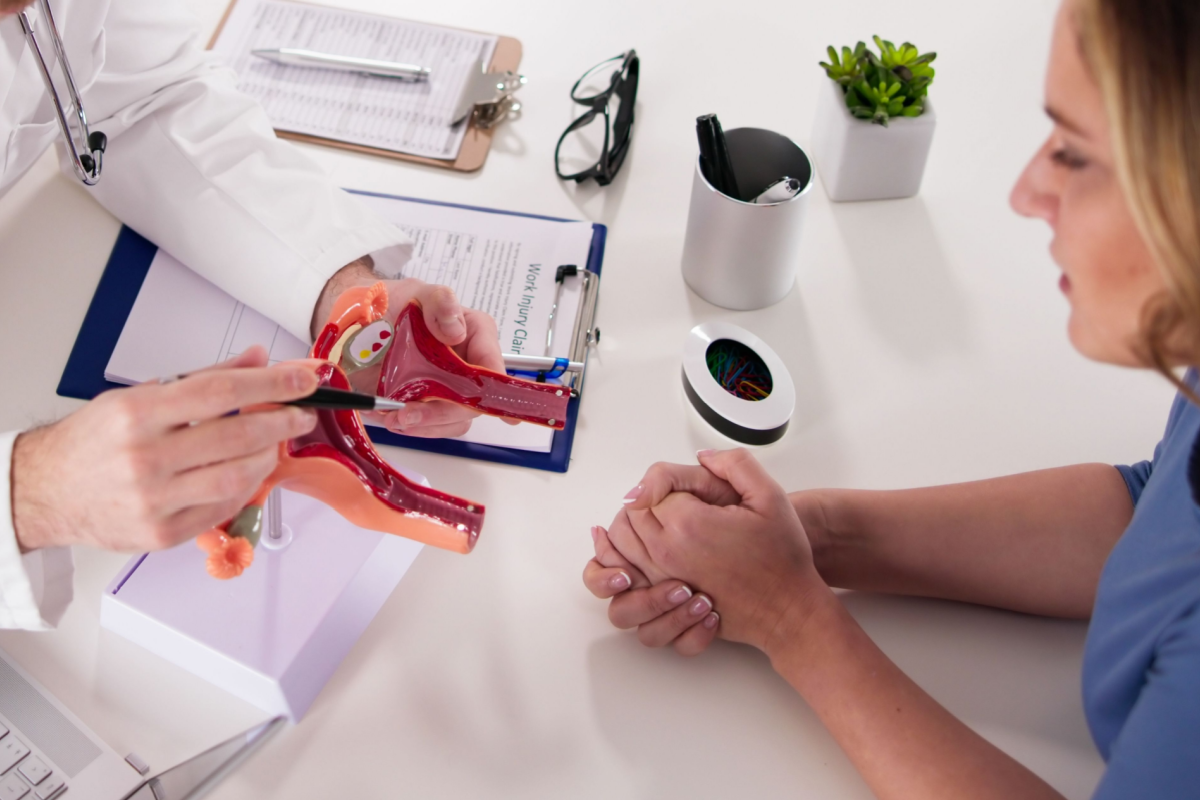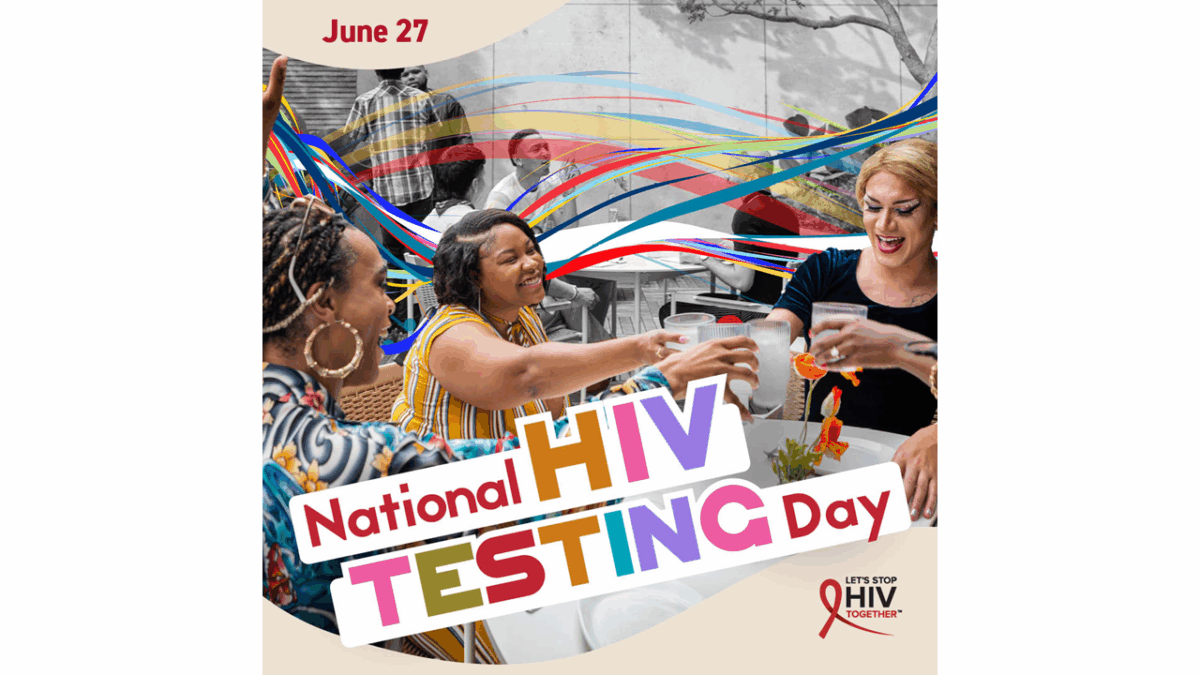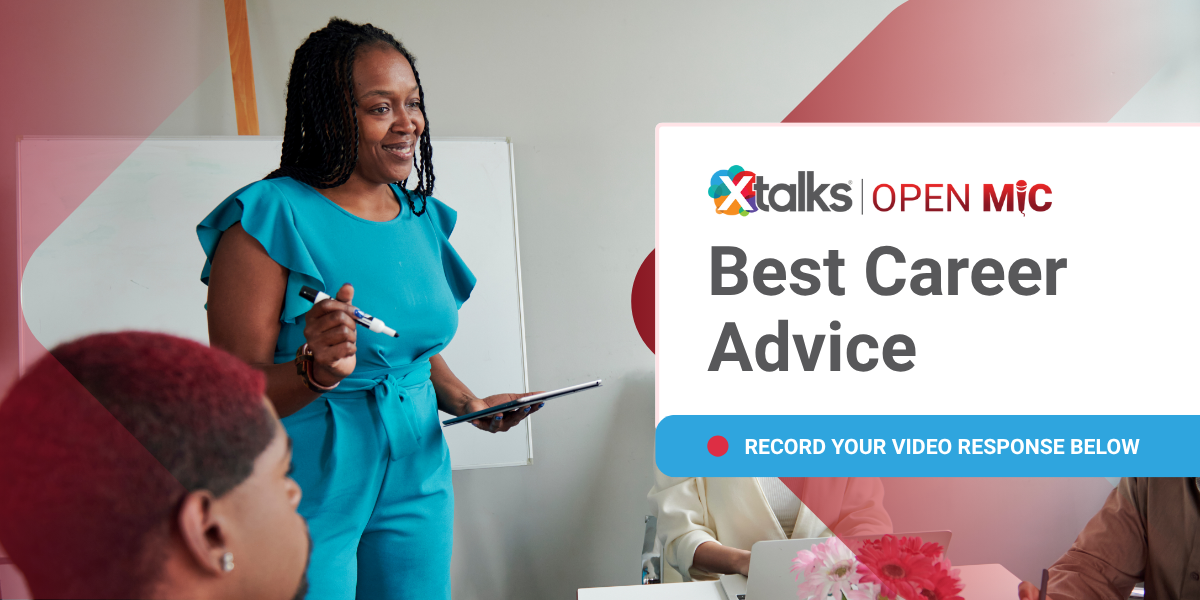Clinical trials are essential for the development of new treatments for rare diseases, but they can be complex and challenging to execute. Patient input is a crucial component of rare disease clinical trials, as it can provide valuable insights into the patient experience and inform decisions about study design and implementation.
However, simply collecting patient input is not enough – it must be translated into actionable insights that can drive meaningful change. Xtalks spoke with Wendy Erler, VP, Global Head of Patient Experience at AstraZeneca’s Alexion Rare Disease, to learn about the processes in place that are allowing Alexion to gather, organize and make use of patients and caregiver insights in rare disease clinical trials.
From identifying key patient priorities to implementing changes in study design and recruitment strategies, Erler shares her experiences and best practices for using patient feedback to drive innovation and improve the lives of those living with rare diseases.
Can you start by telling me about your experience in the rare disease space and your background?
Wendy: I’ve been leading patient advocacy teams for a very long time now, moving to Alexion [in 2019] with our expansive portfolio. I’ve been in 25 different rare disease communities focused on patient advocacy. I started in oncology and worked in a couple of rare oncology conditions and then moved into very rare diseases, like spinal muscular atrophy. I found that this mission and commitment to the patient voice is so tangible in the rare disease community and really connects me to my purpose. I’m very committed to working in rare disease for that reason.
I know you also serve on the board of directors for Global Genes, which recently merged with RARE-X. Could you tell me about your work there and what their mission is?
Wendy: RARE-X is now the data and research arm of Global Genes, the flagship patient organization representing rare, ultra-rare, and “n-of-one” patients. It’s really an exciting initiative on the RARE-X side to focus on federated patient data and ensuring that these data are patient-owned, robust and research ready, while ensuring the data is available for all sorts of research needs in a way that’s easy and accessible. The goal is to make sure critical data doesn’t get caught up in MTAs [material transfer agreements] at academic institutions, or industry ownership issues, but truly makes these very important data available for everyone to use for meaningful research.
That mission is really important to me because I think it’s the only way we’re going to accelerate drug development in rare disease. So few rare diseases actually have meaningful therapies. If there’s a way to ensure that natural history data sets or data from clinical trials that didn’t work are all available for us to learn from rather than starting from scratch every time, that’s the way to truly accelerate the development of meaningful therapies.
I’m interested to learn more about the history of rare disease trials as it relates to the patient voice. When did companies really start listening to patient and caregiver insights? Or when did this idea of the patient voice really start to take off?
Wendy: I think there’s a broader question here which is, “When did this start to take off in healthcare?” Going back about 10 years, there were a lot of publications about actually listening to patients and understanding what their needs are. And the idea of personalized medicine was starting to take off. An important conversation started around really understanding the patient experience and why listening to patients and respecting their knowledge matters, both in the healthcare setting and in the drug development setting with pharma and academics. Using those insights to identify meaningful outcomes that would actually matter to serve patients [became the goal].
Patient verbatims are the most important data we have.
– Wendy Erler
If we’re honest, in the early days a lot of the work around patient-centricity was more focused on platitudes, words on a wall, and saying, “Oh, we’re patient-centric.” but there wasn’t a lot of momentum to drive meaningful patient-centric frameworks and operating models to actually be able to make this real and reproducible, and apply measures and metrics and all of those things you need when you’re actually building a business focused on how to listen to your key stakeholders.
In recent years, thinking about the last five years in my view, the conversation has substantively changed. Now it’s regulators, payers, academics, patient communities, physicians and industry all asking, “Where have you incorporated the patient voice? Where have you asked caregivers about what really matters? Where are you getting these data?” I think that collectively all those different viewpoints from different pieces of the puzzle are coming together in such a way that the patient voice is really being recognized as a critical part of the input. It sounds so obvious, but it’s been hard to do in the past, to get everybody aligned. That insight and that experience data is as important as the rigorous scientific data we’re gathering. I always say to our teams, “Patient verbatims are the most important data we have.”
What’s the general feeling in the drug development industry around the patient voice? Do you think that companies are reluctant to include patient feedback into trials due to the complexity that adds to an already complex system?
Wendy: I do think it varies significantly from place to place. And in my experience, the only way it’s really successful is if you actually build capability focused on being able to do this right. The way I describe it is that organizations are delivered to get the results they get. So if you’re not organized to bring the patient voice in, listen to patients and then take action based on their insights, you’re not going to be able to deliver on the commitment of patient-centricity. And it will continue to be platitudes.
No one’s going to stand up and say, “I’m not patient-centric. It doesn’t matter.” But there’s a difference between, “Oh, I heard a patient tell their story, and that moved me,” and, “When I heard them tell their story, this is what I heard. These are the insights I learned, and this is what I’m going to do with those insights.”
It does come down to effectively having the infrastructure to drive partnerships and really engaging with patients as opposed to just developing things to push out to them. [It’s the difference between a] transactional perspective and really building these early partnerships. That takes organizational capability expertise.
Organizations are delivered to get the results they get. If you’re not organized to bring the patient voice in, you’re not going to be able to deliver on the commitment of patient-centricity.
-Wendy Erler
When we start drug development programs, we have a head of regulatory, a head of commercial, and a head of medical. Well, you also need a head of patient. You need somebody that is actually responsible for bringing in patient voices and driving the other parts of the organization to pay attention.
I also think there are a lot of opportunities to involve patients and caregivers in places where they can make a difference in our internal decision-making. It’s important to have patients and caregivers be representatives on committees, such as a clinical trial committee or a registry scientific committee. Ensuring everyone across drug development has an opportunity to engage with people from the disease areas to bring that expertise to other places within the business. It’s truly a partnership approach.
XTALKS PEER CIRCLE: Rare Disease Clinical Trials Peer Circle
Members of this Peer Circle will gain access to other clinical trials leaders working in rare diseases and form a mini think tank to help solve pressing issues that they are facing in clinical trials for orphan drugs.
In terms of including patients and their feedback earlier on in trial planning, what are the benefits that pharmaceutical companies can realize?
Wendy: We do know that leveraging the patient voice does impact and improve timelines. There’s a lot of data to support that.
It gets more challenging with individual studies to be able to predict at the front end how much time, how many fewer amendments and how much faster you will enroll. And sometimes businesses are organized to need that data.
We have to create a culture where our very robust scientific teams are willing to operate a little bit from a qualitative data perspective. Meaning, the patient experience, viewed in a scientific way, builds trust and enables us to research outcomes and endpoints that matter. We know this works. We know building trust early has an impact, but trials can take eight to 10 years to execute. It’s a long-term view and meaningful engagement must start very early and be consistent and transparent.
Ultimately, there’s a shared mission and goal to develop meaningful medicines to help patients live better lives with their conditions. And the only way to establish the outcomes and endpoints that matter to patients is to ask them and to try to deeply understand their experience. We storyboard the patient experience as best we can and then identify moments that matter and learn from them.
Early in my career, I was working on a team developing a clinical trial protocol for a condition in which most of the participants were non-ambulatory and not able to walk. And one of the young men said to me, “I don’t ever need to walk again. That’s not my goal. I need to be able to hold a spoon and use my Game Boy.” When you realize that’s what’s important to this community, then maybe our endpoint shouldn’t be the six-minute walk test.
The other area where I think getting input early is really critical is actually understanding from the participant view what is the burden of participating in this trial? If you are doing 16 tests and it requires that somebody be at the site at 8:00 AM in the morning on the day of their clinical trial visit, well that really means they have to arrive the night before. And then if fatigue and pain are problems in this particular disease, then starting at 8:00 AM is already probably putting you behind the eight-ball for a fair evaluation of the study drug.
We have to create a culture where our very robust scientific teams are willing to operate a little bit from a qualitative data perspective.
-Wendy Erler
Some questions you should ask are: Do you need to do all those assessments? Can you do fewer? Should you have two really light days or one really heavy day? What works for the people participating in this study? What do they need from us to have a successful study experience? A successful study experience from our view is very different than from the participant view. How do we achieve what both parties need?
And if you’re conducting a study at a very big clinical trial center, which happens a lot, is there a way to facilitate people coming to the patient at the site versus that patient having to go from department to department? Some of these big academic centers are like mini cities; it can be very overwhelming and very exhausting just to navigate the center. Thinking about the burden of participating and how you can reduce it as much as possible can help benefit a wide variety of people who could be in the study.
What are some of the challenges of turning this patient feedback that you get into actionable insights?
Wendy: Yeah, I think that’s where the magic happens, right? Incorporating patient insights into clinical trial design consistently over the long course of time is shown to improve timelines, but involvement from all stakeholders, including physicians, adds more steps in the early part of the process. You really have to get the development teams aligned in that it may seem like there’s more work on the front end, but improvement and impact comes in the back end.
I also think it requires building operational models and frameworks with a set of governance rules to be able to hold everybody accountable for working this way. The need to develop points in time where patient insights can inform clinical research is really critical. And I think it has to be part of that planning cycle so that there’s accountability and it’s not just, “Oh yeah, we didn’t have time to do that,” or, “We didn’t have the budget.” It’s actually part of the process.
Patient-centricity and our whole agenda is shaping the way trials are designed, but it definitely needs to be implemented. And one of the things that we’ve done [at Alexion] is really align as a full organization on what it means to be patient-centric. We have a consistent view and approach in all parts of our business. We’re really committed to the inclusion of patient-reported outcomes (PROs) in our trials, which helps ensure that treatment outcomes, including those that are related to how patients feel or function, are captured. This means not just blood work, not just MRIs, but the surround sound of the impact of the condition, or a medicine, and making sure that that PRO data is actually used to help guide care, approval, regulatory insights. Moreover, we embed patient centricity far beyond clinical development. Development is just the beginning.
And then we also are very committed to the pull through of plain language summaries for clinical trials as well as plain language summaries for publications, in addition to communicating milestone events back to the patient communities. We don’t just ask everybody to participate in our studies, it’s bidirectional, and we share information.
Do you think there’s a difference between how large, or more established, pharma companies are trying to incorporate the patient voice versus smaller biotechs?
Wendy: I think fundamentally, regardless of the size of the organization, it comes down to that tone at the top. If the executive leadership is really committed to being organized around patient-centricity and delivering high-level capability focused on patient insights, that resonates down through the organization. Conversely, if the executive leadership is more focused on doing things the way they’ve always been done, or meeting the needs of the masses instead of the needs of a few, then teams work accordingly.
There are some nuances in rare disease research that make this maybe more critical from an execution perspective. There are often very few sites, very few patients, and the kind of feasibility data you get early on isn’t always reflective of where these potential trial participants live and can participate. In bigger population conditions, some of those data inputs into the trial design can be more assumed because you have bigger data sets.
The truth is that over the last 10 years there’s been an increasing complexity in general in the design of clinical trials. One statistic I saw is that the number of procedures required in a trial has increased by 59 percent, and the number of planned site visits has increased by 25 percent. That’s asking a lot of people.
You really have to have the mindset as you’re developing and designing clinical trials that facilitated patient engagement, research, and decision making is a critical driver of the drug development process. In each of those stages of drug development, where are you committed to engaging with patients and caregivers? And then what are you going to do with the information they share?
Patient-centricity must also have an impact on patient retention as well.
Yeah, and I think if we look at this view being as critical as the physician/investigator view, as the payer view, as the regulator view, that’s a model that makes sense. We are very accustomed to getting all of those insights, and running a lot of advisory boards, and doing those traditional activities. How can we think about patient insights and patient engagement in the same way?
Is there anything else you’d like to add about Alexion’s patient-centric model?
Wendy: I think one piece that we haven’t talked about is that fundamentally, and I mentioned this before, you’re organized to deliver the results you get. We started from three key places when we built this patient-centric organization at Alexion. One was defining what we mean by the term “patient-centricity” and really rallying every employee around our definition, our principles and the fact that this is core to who we are.
Again, this is not just words on a wall, but a very clear mindset to drive behavior shifts, if needed. The second was that we built a dedicated capability. I have a global patient advocacy team with patient advocacy leads in each of our major markets. Patients are local, language is local, treatment is local. We knew we needed this local expertise to actually engage with patient advocacy groups and patients at the local level, so we invested in building that capability. We have leaders who represent the patient voice at every turn.
The third thing we did was really build those frameworks, the operating models, the governance, the SOPs and all the pieces that you need in place to actually be able to do this. We wanted to ensure that we could be compliant and be respectful, follow up, and make sure we have the right consent forms on file. We actually built the expertise to make sure we could serve the patients well.
With over two decades of experience in patient advocacy, Erler has witnessed a shift towards recognizing the value of the patient voice in drug development. While the industry has made progress in this area, there is still work to be done in building capability and incorporating patient insights into drug development. By prioritizing patient feedback and turning it into actionable insights, the pharmaceutical industry can accelerate the development of meaningful therapies and make a positive impact on the lives of patients and their families.
Erler is also the Chairperson for the Xtalks Rare Disease Clinical Trials Peer Circle. Learn more about how you can participate in this exclusive networking group.













Join or login to leave a comment
JOIN LOGIN